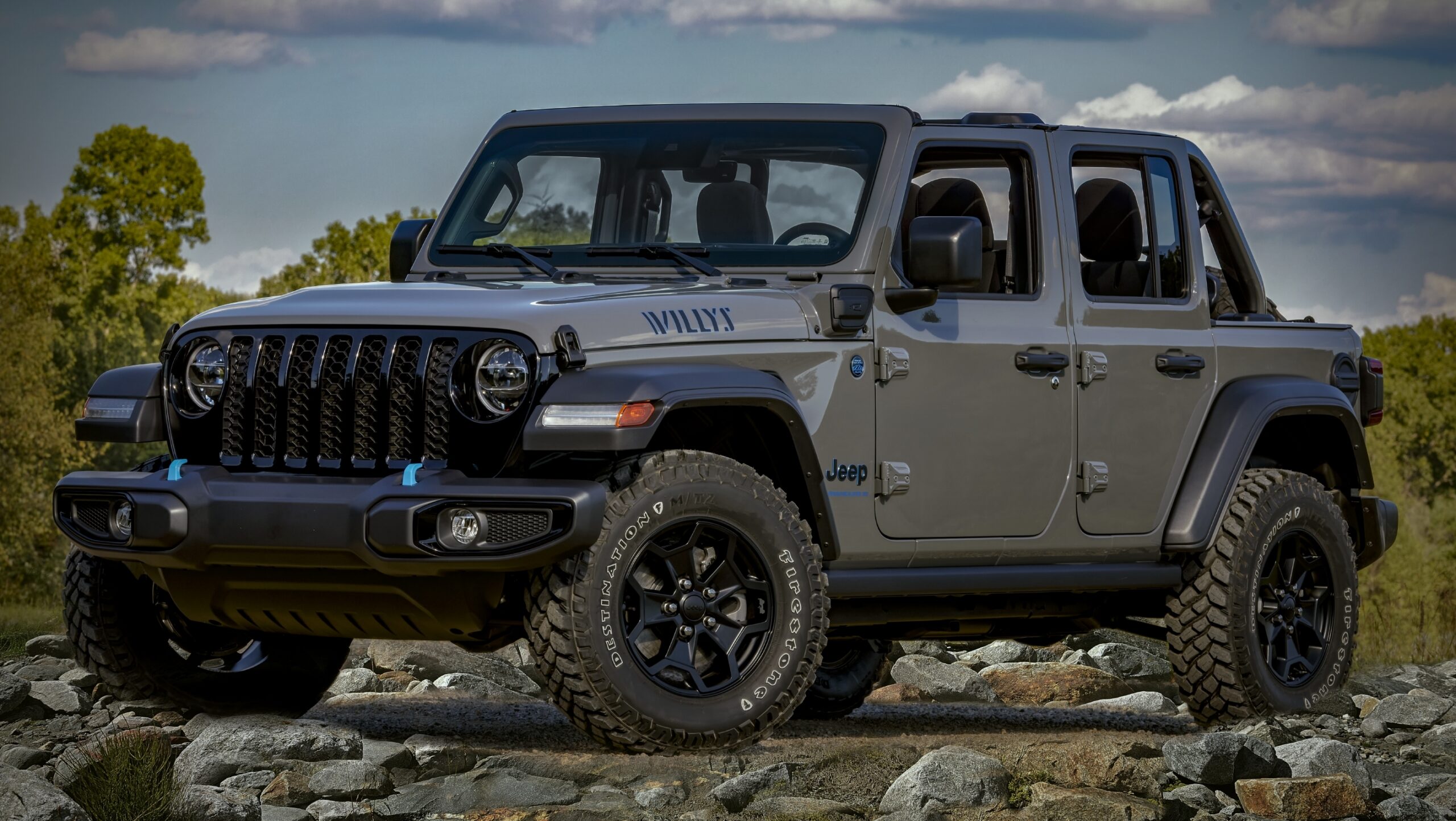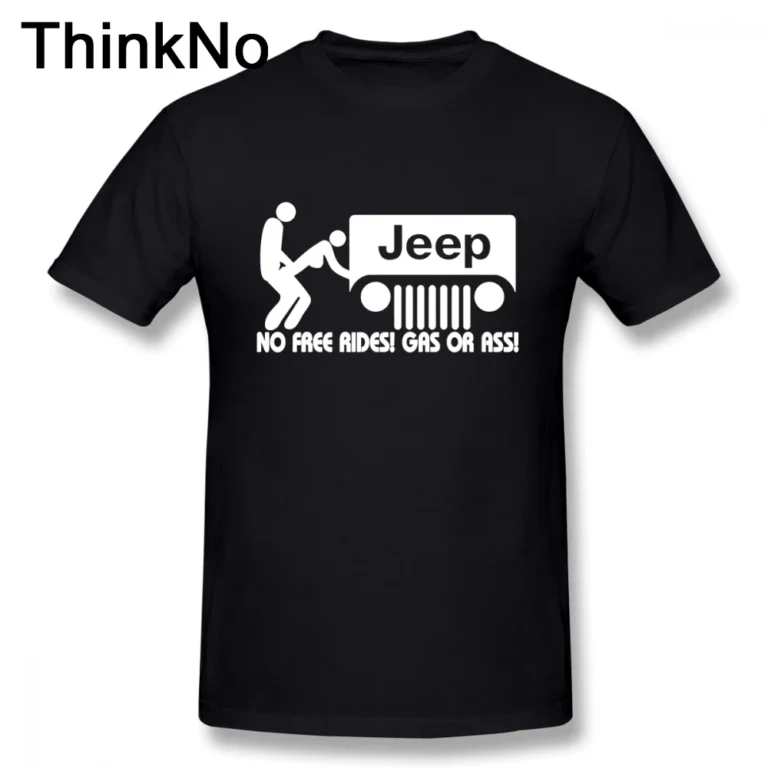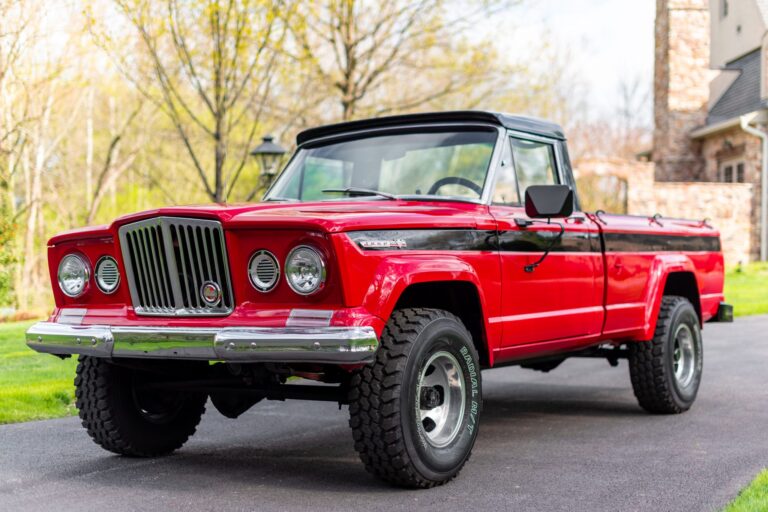Jeep Dana 44 Rear Axle For Sale: Your Ultimate Buyer’s Guide
Jeep Dana 44 Rear Axle For Sale: Your Ultimate Buyer’s Guide jeeps.truckstrend.com
Introduction: Unlocking Off-Road Potential with the Legendary Dana 44
For generations of Jeep enthusiasts, the name "Dana 44" evokes a sense of rugged reliability, impressive strength, and unmatched aftermarket support. It’s more than just an axle; it’s a cornerstone of serious off-road performance, a proven upgrade for those looking to push their Jeeps further, or a vital replacement for a worn-out component. Whether you’re planning to tackle gnarly rock crawling trails, traverse deep mud pits, or simply demand more durability from your daily driver, the Dana 44 rear axle stands as a highly sought-after component in the Jeep community.
Jeep Dana 44 Rear Axle For Sale: Your Ultimate Buyer’s Guide
But what exactly makes the Dana 44 so special, and what should you consider when you find a "Jeep Dana 44 Rear Axle For Sale"? This comprehensive guide will delve into every aspect of acquiring this iconic piece of hardware, from understanding its variations and benefits to navigating the buying process and performing essential checks. Prepare to equip yourself with the knowledge needed to make an informed decision and secure the perfect Dana 44 for your Jeep.
What is the Jeep Dana 44 Rear Axle? A Legacy of Strength
The Dana 44 is a medium-duty axle manufactured by Dana Corporation, renowned for its robust construction and versatility. It has been a staple in various vehicles, including many Jeep models, for decades. Compared to its smaller sibling, the Dana 35, the Dana 44 boasts a larger ring gear (typically 8.5 inches vs. 7.5 inches), stronger axle tubes, and more robust differential components. This translates directly to increased torque capacity and improved resistance to breakage, especially under the strenuous conditions of off-road driving with larger tires and lower gearing.
Its widespread use in factory Jeeps (such as the TJ Rubicon, JK Rubicon, and some XJ/ZJ/WJ models) and its enduring popularity in the aftermarket have created an unparalleled ecosystem of spare parts, upgrade components, and expert knowledge. This makes the Dana 44 not just strong, but also incredibly serviceable and adaptable, solidifying its reputation as one of the most reliable and upgradeable axles available for Jeeps.
Why Upgrade to a Dana 44 Rear Axle? The Benefits Explained
Many Jeep owners embark on the quest for a Dana 44 rear axle for compelling reasons:
- Increased Strength and Durability: The primary motivation. The Dana 44 can handle larger tires (typically up to 37 inches with appropriate upgrades), more powerful engines, and more aggressive driving styles than weaker stock axles.
- Reliability on the Trail: Reduced risk of axle shaft breakage, bent housings, or differential failure far from civilization, providing peace of mind during challenging off-road excursions.
- Enhanced Aftermarket Support: A vast array of lockers, limited-slip differentials, chromoly axle shafts, stronger differential covers, and re-gearing options are readily available, allowing for precise customization to meet specific needs.
- Improved Performance: With stronger components, you can confidently run lower gear ratios for better crawling ability, or higher ratios for highway efficiency, without worrying about overstressing the axle.
- Resale Value: A Jeep equipped with Dana 44 axles is generally more appealing to serious off-road enthusiasts and can command a higher resale value.


Identifying a Dana 44 Rear Axle: Know What You’re Looking At
Before you commit to a purchase, it’s crucial to correctly identify a Dana 44. Misidentification can lead to costly mistakes. Here’s how to spot one:
- Differential Cover Shape: The Dana 44 typically has a somewhat oval-shaped differential cover with a distinct "flat" bottom edge.
- Bolt Count: Count the bolts on the differential cover. A Dana 44 will have 10 bolts. (A Dana 35 has 10 bolts but a rounder cover; a Dana 60 has 12 bolts and is much larger).
- Casting Numbers: Look for "44" cast into the housing itself, usually near the differential pumpkin. Sometimes it might be obscured by dirt or paint.
- Axle Tube Diameter: While not definitive without measurement, Dana 44 axle tubes are visibly thicker than Dana 35 tubes.

Types and Variations of Jeep Dana 44 Rear Axles
Not all Dana 44s are created equal, especially when it comes to Jeeps. Understanding the variations is critical for compatibility and performance:
- Jeep Wrangler TJ Dana 44 (1997-2006):
- Rubicon Specific: These are highly sought after. They are non-C-clip, have 30-spline axle shafts, come with factory air lockers (Tru-Lok), and disc brakes. They are typically 60.5 inches wide.
- Non-Rubicon Options: Some non-Rubicon TJs (often with the Tow Package) came with a C-clip Dana 44, usually with drum brakes and open differentials. These are still stronger than a Dana 35 but less desirable than the Rubicon version.
- Jeep Wrangler JK Dana 44 (2007-2018):
- Rubicon Specific: These are also very desirable, featuring an electric locker (ELocker), 32-spline axle shafts, and disc brakes. They are wider than TJ axles (65.5 inches for 2-door, 63.5 inches for 4-door, though some sources differ slightly). They are C-clip axles.
- Sport/Sahara Rear: Many non-Rubicon JKs came with a rear Dana 44, but these are typically open differential and C-clip axles. Still strong, but without the factory locker.
- Jeep Wrangler JL/Gladiator JT Dana 44 (2018-Present):
- Rubicon/Mojave Specific: These are the latest generation, often referred to as "Dana M220" or "AdvanTEK" axles. They feature larger ring gears (220mm), 32-spline shafts, and are very robust. They are also C-clip.
- Cherokee XJ, Grand Cherokee ZJ/WJ Dana 44:
- XJ (Cherokee): Rare find, usually a C-clip version found in some XJs with the Tow Package.
- ZJ (Grand Cherokee): Found in some V8 models, primarily with aluminum differential housings and aluminum "Alloy" Dana 44s. These are lighter but less desirable for heavy off-road use due to the housing material.
- WJ (Grand Cherokee): Most V8 WJs came with a Dana 44a (aluminum housing). Again, less desirable for hardcore wheeling compared to cast iron Dana 44s. The rare factory option for a solid iron housing was typically a Dana 44 HD (Heavy Duty) or Dana 44a with an iron differential.
Key Distinction: C-Clip vs. Non-C-Clip
- C-clip axles: The axle shafts are retained by C-shaped clips inside the differential. If an axle shaft breaks, the wheel can potentially come off. Common on JK, JL, some TJ.
- Non-C-clip axles: The axle shafts are retained by a flange on the outside of the axle housing or by bolt-in bearing retainers. Considered safer in the event of a shaft breakage. Common on TJ Rubicons and some early Dana 44s.
High Pinion vs. Low Pinion:
- High Pinion (HP): The pinion gear sits above the centerline of the ring gear. Found in some front axles and very few rear axles (e.g., early Ford Bronco Dana 44 front used as a rear). Offers better driveshaft angle for lifted vehicles and stronger gear tooth engagement under forward propulsion.
- Low Pinion (LP): The pinion gear sits below the centerline of the ring gear. Most factory rear Dana 44s are low pinion.
Key Considerations When Buying a Used Dana 44 Rear Axle
Buying a used axle requires diligence. Here’s a checklist of crucial factors:
- Condition of the Housing:
- Rust: Surface rust is common, but inspect for deep pitting or structural rust, especially around welds and mounting points.
- Bent Tubes: Sight down the axle tubes from the differential. A bent tube is a major problem, often requiring replacement.
- Cracks/Damage: Check for cracks around the differential pumpkin, spring perches, and control arm mounts, especially if it came from a wrecked vehicle.
- Gear Ratio: This is paramount! The gear ratio (e.g., 3.73, 4.10, 4.88) must match your existing front axle (if you have 4WD) and be appropriate for your tire size and driving style. If mismatched, you’ll need to re-gear, adding significant cost. Look for tags on the differential cover or markings on the gears.
- Locker/Limited Slip Differential (LSD) Status: Does it have a factory locker (e.g., Rubicon Tru-Lok/ELocker) or an aftermarket locker/LSD? Or is it an open differential? A factory locker adds significant value. Ask for confirmation or inspect the differential if possible.
- Axle Shafts: What spline count are they (30-spline, 32-spline)? Are they stock or aftermarket chromoly? Inspect for twist or damage, especially at the splines.
- Bolt Pattern: Ensure it matches your wheels. Common Jeep patterns are 5×4.5" (TJ, XJ, ZJ), 5×5" (JK, JL, WJ), and older 5×5.5" (CJ, YJ). Using wheel adapters is an option but adds cost and complexity.
- Width (WMS to WMS): "Wheel Mounting Surface to Wheel Mounting Surface." This determines how wide your track will be. Ensure it’s compatible with your Jeep and desired stance.
- TJ: ~60.5"
- JK 2-Door: ~63.5"
- JK 4-Door: ~65.5"
- JL/JT: ~68.5" (Rubicon)
- Brake Type: Does it come with disc brakes or drum brakes? Most later model Dana 44s are disc, which is generally preferred. Ensure the calipers and rotors are in decent condition.
- Mounting Brackets: Are the spring perches, shock mounts, and control arm mounts intact and correctly positioned for your application? If not, you’ll need to cut off the old ones and weld on new ones, a job best left to a professional.
- Fluid Condition and Bearings: Check the differential fluid (if present) for metallic flakes, indicating excessive wear. Inspect wheel bearings for play or noise.
Where to Find a Jeep Dana 44 Rear Axle For Sale
The hunt for a Dana 44 can take you to several places:
- Online Marketplaces:
- Facebook Marketplace/Groups: Excellent for local finds. Search for Jeep-specific parts groups.
- Craigslist: Similar to Facebook, good for local private sellers.
- eBay: Wider selection but shipping can be very expensive for an axle.
- Dedicated Jeep Forums/Websites: Sites like WranglerForum, JK-Forum, JL-Forum, NAXJA (XJ), etc., often have "For Sale" sections.
- Salvage Yards/Junkyards: Call around to local yards. Prices can be lower, but condition is often unknown, and identification is solely on you.
- Specialty Off-Road Shops: Some shops dismantle Jeeps or build custom axles. They might have used Dana 44s or know where to find them.
- Axle Builders/Fabricators: Companies that build custom axles (e.g., Currie Enterprises, Dynatrac, G2 Axle & Gear) sometimes sell used housings or complete take-offs. While more expensive, these often come inspected or rebuilt.
The Buying Process: Tips for a Smooth Transaction
- Ask Detailed Questions: Don’t be afraid to ask about the axle’s history, the vehicle it came from, mileage, and any known issues.
- Request Photos/Videos: Ask for multiple high-resolution photos of the differential, axle tubes, mounting points, and any casting numbers. If possible, ask for a video of the input shaft spinning to check for unusual noises.
- Inspect in Person: This is ideal. Bring a flashlight, a magnet (to check for aluminum housings), and even a tape measure. Look for leaks, damage, and excessive play.
- Verify Components: If the seller claims it has a specific gear ratio or locker, try to verify it. For gears, spin the input yoke and count the wheel rotations. For lockers, try to spin one wheel while holding the other (if it’s out of the vehicle).
- Negotiate Fairly: Research comparable sales. Factor in the cost of any necessary repairs or upgrades (e.g., re-gearing, new bearings, brakes).
- Plan for Transportation: Axles are heavy! You’ll need a truck, trailer, or a sturdy pallet and freight shipping if buying remotely.
Common Upgrades and Modifications for a Dana 44
Once you have your Dana 44, you might consider:
- Re-gearing: Essential if the existing ratio doesn’t match your needs or front axle.
- Locker/LSD Installation: For improved traction.
- Chromoly Axle Shafts: Stronger than stock for larger tires and harder abuse.
- Differential Cover: Heavy-duty covers protect the pumpkin from impacts.
- Axle Truss: Welded to the axle tubes to prevent bending under extreme loads.
- New Bearings and Seals: Good preventative maintenance, especially on a used axle.
Potential Challenges and Solutions
- Hidden Damage: A common risk with used parts. Solutions: Thorough inspection, buying from reputable sellers, and budgeting for potential repairs.
- Compatibility Issues: Wrong width, bolt pattern, or mounting points. Solutions: Meticulous research, precise measurements, and being prepared for fabrication if necessary.
- High Prices: Desirable Dana 44s (like Rubicon take-offs) can be expensive. Solutions: Be patient, shop around, consider non-Rubicon Dana 44s, or explore options like a bare housing that you can build up yourself.
- Shipping Costs: Freight shipping can be hundreds of dollars. Solution: Prioritize local pickups or factor shipping into your total budget.
Price Table: Representative Costs for Jeep Dana 44 Rear Axles (Estimated Ranges)
Prices for Jeep Dana 44 rear axles vary significantly based on condition, included components (gears, locker, shafts, brakes), specific Jeep model, and geographic location. The table below provides estimated ranges for common scenarios.
| Axle Type/Condition | Description | Estimated Price Range (USD) | Key Factors Affecting Price |
|---|---|---|---|
| Bare Housing Only | Stripped housing, no internals (gears, shafts, differential), no brakes. May require cleanup/repair. | $200 – $600 | Condition of housing, bent tubes, rust, type (e.g., TJ vs. JK), rarity. |
| Complete Stock Axle (Open Diff) | Comes with stock open differential, axle shafts, and brakes (drum or disc). No locker. | $500 – $1,200 | Mileage, wear on gears/bearings, condition of brakes, axle width, C-clip vs. non-C-clip, rust. |
| Complete Stock Axle (with Factory Locker) | Highly sought-after. Includes factory locker (e.g., TJ/JK Rubicon Tru-Lok/ELocker), shafts, brakes. | $1,000 – $2,500+ | Working condition of locker, mileage, wear, specific Jeep model (Rubicon axles command premium), included sensors/wiring. |
| Complete Axle (with Aftermarket Locker/Shafts) | Stock housing with upgraded aftermarket locker (e.g., ARB, Detroit) and/or chromoly axle shafts. | $1,500 – $3,000+ | Type and brand of aftermarket components, professional installation, condition of upgrades. |
| Rebuilt/Refurbished Axle | Axle that has been professionally inspected, cleaned, with new bearings, seals, and possibly gears. | $1,800 – $3,500+ | Extent of rebuild, warranty (if any), specific upgrades, shop reputation. |
| Brand New Crate Axle (Aftermarket) | New, complete axle assembly from a reputable aftermarket manufacturer (e.g., Currie, Dynatrac). | $3,500 – $7,000+ | Customization options (gear ratio, locker, shafts, housing material), brand reputation, warranty. These are typically "bolt-in" ready for specific models. |
Note: Shipping costs are generally not included in these price estimates and can add several hundred dollars. Local pickup is always recommended to save on freight.
Frequently Asked Questions (FAQ) about Jeep Dana 44 Rear Axles
Q1: Is a Dana 44 strong enough for 37-inch tires?
A1: A stock Dana 44 can handle 37-inch tires for mild to moderate off-roading. However, for aggressive wheeling or rock crawling, it’s highly recommended to upgrade to chromoly axle shafts, a strong differential cover, and potentially an axle truss to prevent bending.
Q2: What’s the main difference between a JK Dana 44 and a TJ Dana 44?
A2: Key differences include width (JKs are wider), spline count (JKs are 32-spline, TJs are typically 30-spline), and C-clip vs. non-C-clip retention (JKs are C-clip, TJ Rubicons are non-C-clip). The differential itself also has some internal differences.
Q3: Can I put a Dana 44 from a different Jeep model into my Jeep?
A3: Yes, but it will likely require significant modification (cutting off old brackets, welding on new ones, potentially adjusting driveshaft length). The width and bolt pattern must also be considered. For example, putting a wider JK Dana 44 into a narrower TJ requires careful planning for tire clearance and wheel offset.
Q4: How do I determine the gear ratio of a used Dana 44?
A4: Look for metal tags on the differential cover bolts (often indicating the ratio). If no tag, you can spin the input yoke and count the number of turns it takes for the axle shaft (or wheel) to complete one full rotation. For example, if the yoke turns roughly 4.1 times for one wheel rotation, it’s likely a 4.10 ratio. This is easier to do if the axle shafts are installed and differential is open, or if you can turn both wheels simultaneously (if locker is open).
Q5: What is the benefit of a non-C-clip axle over a C-clip axle?
A5: In a non-C-clip axle, if an axle shaft breaks, the wheel is still retained by the bearing and axle flange, preventing it from detaching from the vehicle. In a C-clip axle, a broken shaft can allow the wheel to slide out. While C-clip failures are rare in normal driving, the peace of mind of a non-C-clip is desirable for hardcore off-roaders.
Q6: Should I buy a bare Dana 44 housing or a complete axle?
A6: A bare housing is cheaper but requires you to buy all internal components (gears, differential, shafts, brakes), which can add up quickly. A complete axle is more expensive upfront but can be a direct bolt-in or require minimal work. Your budget, mechanical skill, and desired final configuration will dictate the best choice.
Conclusion: Investing in Off-Road Prowess
The Jeep Dana 44 rear axle is a legendary component for a reason: it offers a significant boost in strength, reliability, and upgradeability over weaker stock axles. Acquiring one for your Jeep is an investment in your vehicle’s off-road capability and its longevity on challenging terrain.
By thoroughly understanding the different types, carefully considering the key factors like condition, gear ratio, and bolt pattern, and knowing where and how to conduct your search, you can confidently navigate the market for a "Jeep Dana 44 Rear Axle For Sale." Remember that diligence, patience, and a willingness to ask the right questions are your best tools in finding the perfect Dana 44 that will serve your Jeep adventures for years to come. Happy hunting, and may your trails be ever rugged and your axles ever strong!




